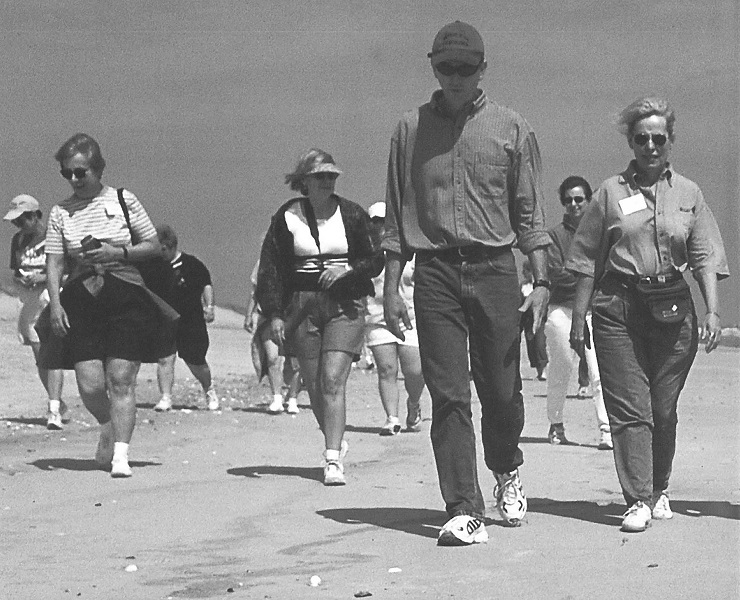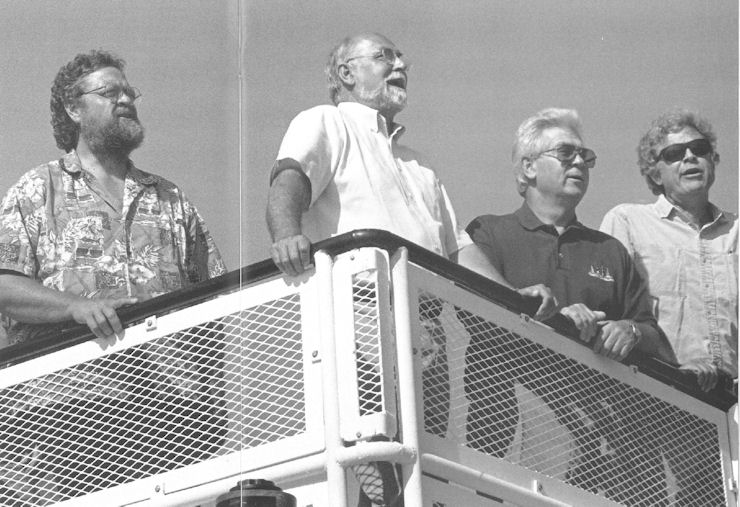A HISTORIAN’S COAST: The Book of Nature
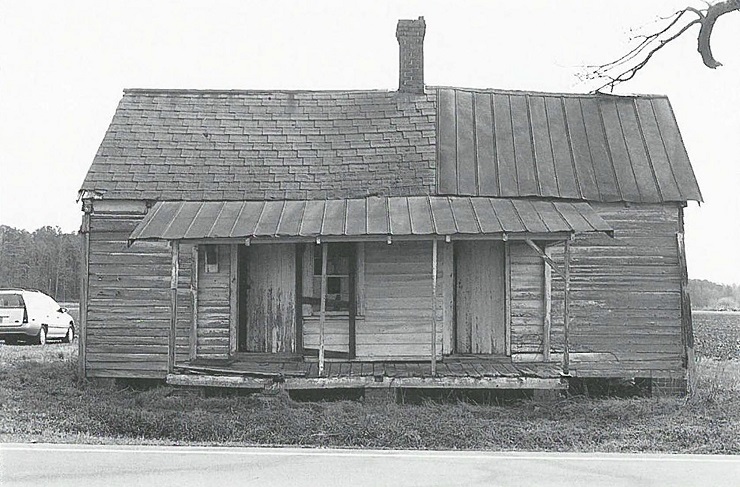
In, 1895, a popcorn peddler named Allen Parker told the story of his life as a slave on the North Carolina coast. Parker published only a few copies of Recollections of Slavery Times for his friends and family in Worcester, Mass., where he lived after the Civil War. The slim, 97-page book quickly faded into obscurity, unknown even to the leading scholars on American slave narratives.
Then, two or three years ago, I stumbled upon a copy of this priceless lost memoir at the Illinois State Historical Library in Springfield, Ill. How the book ended up in Illinois remains a mystery. But that manuscript turned out to be the only surviving copy of Parker’s Recollections in any library or archive in the United States.
I do not know if I can put into words the excitement, almost the sheer joy, that a historian feels at discovering a document like Parker’s Recollections. I find these discoveries just as exhilarating as paddling into a swamp wilderness or exploring a remote barrier island after a big storm. A whole new world opens up before you — you never know what wonders and surprises will be revealed in that uncharted territory.
For me, this may be especially true of a slave narrative like Parker’s Recollections. As I travel along the coast, I rarely find any trace of its slave past. Though African American slaves once made up a majority of the population in many tidewater towns and counties, they are virtually invisible in the historic sites, museums, monuments, and markers that portray coastal life before 1865. When Parker decried the fate of his mother, he described that of all slaves who lived and died in coastal North Carolina. In his words, she “now lies buried in an unmarked and neglected grave.”
The scarcity of firsthand accounts of slavery is one important stumbling block to studying slave life. Slaves could not legally be taught to read and write, so they left few written records. To piece together their lives, historians rely almost entirely on accounts left by their masters. The result has been both a planter-centered view of slave life and a fragmented portrait of the antebellum past in general.
To appreciate the importance of a newly discovered slave narrative like Parker’s Recollections, we only have to remember that merely a half-dozen other slave writings are known to have arisen from tidewater North Carolina. Between 1843 and 1852, Harriet Jacobs of Edenton, Moses Grandy of Camden County, and Thomas H. Jones of Wilmington published autobiographies after escaping from the South. Incidents in the Life of a Slave Girl, Jacobs’ narrative, has been belatedly recognized as a classic of American literature.
In addition, William H. Robinson of Wilmington, William Ferebee (once a Currituck slave waterman), and William Henry Singleton (a slave at Garbacon Creek in what is now Carteret County, then part of Craven County) all published memoirs after the Civil War. Except for Jacobs’ Incidents and Singleton’s Recollections of My Slavery Days, these slave narratives can be found only in the largest university libraries and are not readily available to the general public.
Parker provides insight into tidewater life — and not just slave life — that cannot be found anywhere else. Parker worked for a great variety of small planters and yeoman farmers, including the poor sort of backwoods farmer who barely scratched out a living on the edge of the Great Dismal Swamp. This is a part of Albemarle society long overshadowed by the great planters and wealthy merchants, whose family records we have inherited and whose homes are preserved in historic districts. Parker’s memoir cuts through that thin upper crust of Albemarle society and lets us see into the heart of daily life for black and white, slave and free.
Allen Parker’s story begins in Chowan County over a century and a half ago. Born about 1840, he was the son of slaves Millie Parker and Jeff Ellick. He lived on a modest plantation owned by Peter Parker in the Chowan community, a rural neighborhood located eight miles north of Edenton (then the largest seaport on Albemarle Sound) and bordered by Bear Swamp, the Great Dismal Swamp, and two blackwater rivers, the Chowan and the Yeopim. “The country around Chowan was not very thickly settled,” Parker wrote in Recollections, “the land being divided up into farms or plantations, upon which was raised wheat, Indian corn, rye, oats, peanuts, sweet-potatoes and sometimes rice.”
Peter Parker died when Allen was a baby. He left the slave boy and his mother to his infant daughter, Annie, with the stipulation that Millie and Allen should be “hired out” by her guardian until she was an adult. The guardian auctioned off the slaves to other individuals for a year at a time. The hirers got the slaves’ labor; Peter Parker’s estate got the proceeds; Millie and Allen were supposed to get food and clothing. Like many slaves in the Albemarle Sound vicinity, Allen Parker moved annually from master to master.
He never labored for truly prosperous planters, but at times, he was leased to relatively wealthy men. Darias White, for instance, employed 40 slave loggers and teams of mules and oxen in a local swamp, where they harvested old-growth hardwoods for shipbuilding timbers. More often, Parker worked for one-mule farmers who could not afford to own a slave or even to hire slaves except after exceptionally good harvests.
During his childhood, Allen Parker lived among several “good masters,” hardworking men with whose families he shared meals. Within the boundaries of his enslavement, these masters treated him decently. He had a special fondness for a small farmer and storekeeper named George Williams, recalling that he played with Williams’ children and learned some of their school lessons: “I had many good times playing with the other children[,] for whatever the grown white people might think about the colored people, the little children did not know any difference when they were allowed to play with the slave children.”
Young Parker also worked for brutal, malevolent masters who beat him, kept him hungry, and tried at every turn to subdue his spirit. A farmer named Small was among the worst. He beat Allen’s mother severely and worked her day and night in the fields and in his kitchen while she was still breast-feeding a new baby. Confronted with men so vile, Allen and his mother ran away several times, seeking refuge with other slaves or white friends.
When the Civil War broke out, Parker was among the thousands of slaves who escaped from tidewater plantations to Union territory. The Union army captured the Outer Banks and most of the state’s seaports by early 1862, and Albemarle slaves staged a colossal boatlift to freedom behind Union lines. While other Albemarle slaves confiscated sloops or built makeshift rafts and sailed to Union outposts as far away as Roanoke Island and the Outer Banks, Parker did not have to travel so far. He rowed out to a Union gunboat that had come up the Chowan River.
During the Federal occupation, Parker served in the Union navy on the North Carolina sounds. He later worked at a Beaufort sawmill before departing the South as a merchant sailor. He eventually settled in Worcester, married and raised a family while working as a street peddler.
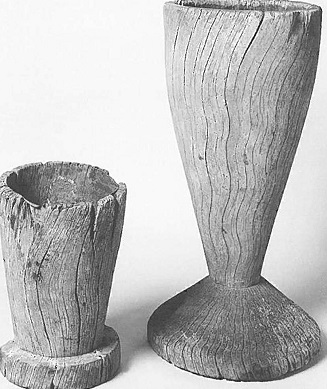
Recollections of Slavery Times may be most important for describing the daily rhythms of slave life in the Carolina tidewater. Parker neither neglects nor lingers over slavery’s terrors. Instead, his genius is in chronicling the details of daily life. He spends four pages simply describing a typical slave cabin — its construction; the composition of its beams, mortar, roof, chimney, doors, and windows; even the cooking utensils and furniture within it.
Parker is like that with everything, and it is this accretion of ordinary details — his diet, clothing, pastimes, religion, music, family — that allows him to distill an essence of slavery far more telling than a litany of atrocities alone.
Parker had a special awareness of the ways in which his masters relied on African American knowledge of agriculture and the earth. My colleague Peter Wood has documented how West African slaves introduced rice cultivation into the Low Country of South Carolina, a critical step in colonizing the tidewater there and along the Lower Cape Fear. Today’s historians share a growing appreciation for the West African roots of agriculture in the early South.
But Parker seems to be making a broader argument. He is not merely saying that slaves brought knowledge of West African crops to the Americas, but also that they gleaned new lessons out of the American woods, fields, and waters simply by working in them and relying on them far more extensively than did their masters.
“Being out of doors a great deal of the time, and having no books, [we slaves] learned many things from the book of Nature, which were unknown to white people, notwithstanding their knowledge of books,” Parker wrote. “And it often happened that the master would be guided by the slave as to the proper time to plant his corn, sow his grain, or harvest his crops, and many things of this kind, which were to the master a source of care and anxiety, seemed to come to the slave as it were by instinct and not often did they make a mistake in their prophecies.”
This reliance on slaves and their knowledge of the “book of Nature” is scarcely surprising. The men and women who toiled in fields of cotton, tobacco, wheat, and corn – day in and day out, year after year — became intimately acquainted with every aspect of cultivation: clearing land, fertilizing, ditching, sowing, weeding, harvesting, and selecting new seed for the next crop. Overseers came and went. Planters often were diverted by other business interests, but slaves got their hands dirty sunup to sundown every day — and learned the lessons that the earth had to offer.
Parker must have learned a great deal about nature when he worked at Darias White’s timber camp near the Great Dismal Swamp. There, he drove oxen teams that hauled 100-foot logs out of the swamp to blackwater streams where they could be floated to a sawmill. “I liked this sort of work very well as it was not often hard, and there was a great deal of excitement about it,” he remembered.
That year, Parker was among 40 or so slaves who “camped in the woods through the entire lumber season.” They lived in a camp “made of logs, bark and pieces of board, which would enclose the camp on three sides, [and] on the fourth a large fire would be built at night.” This sort of camp life is not our usual image of slavery, but it was very common in the timber, shingle-making and naval stores industries. Slaves like Parker developed a unique knowledge of the forest ecology from spending months in such camps.
Whether in swamp or field, the slaves were intimately bound to the “book of Nature.” They related to nature in a way that was different from their masters. For instance, planters told time with watches and clocks. “The slaves,” Parker wrote, “were obliged to depend upon the sun, moon, and stars and other things in nature.”
Of course, Parker and his enslaved brethren did not utilize their familiarity with the “book of Nature” only to raise their masters’ crops and cut their timber. They frequently employed the same knowledge to weaken the grip of bondage on their lives. The slaves — depended upon by the planters for their knowledge of agriculture, fishing, and forest industries — thus achieved at least a small shift in their favor in the neverending power struggle between master and slave.
Just as they learned to rely on the moon and stars in the absence of mechanical clocks, so Albemarle slaves looked in ingenious ways to their natural environment to improve and vary their food rations — and gain a small but important foothold outside their masters’ households. Parker described, for instance, how slaves turned pine needles and small twigs into tea and made coffee out of burnt corn and wheat.
Albemarle slaves also enriched their diets with wild game. “Night,” Parker wrote, “was the slave’s holiday.” It was no accident that he devoted a long chapter of Recollections to how slaves hunted raccoons, opossums, and other nocturnal game. “The slaves believed that the wild game was intended for them,” he observed, “for while the master was enjoying his roast beef or lamb, he did not think that his slaves needed anything of the sort.”
Sometimes, the slaves’ game was not quite as wild as raccoons and opossums. Tidewater farmers allowed their hogs to graze freely in the woods, where they lived cheaply off acorns and roots until rounded up for slaughter. Multitudes of these hogs lived in coastal woodlands, and their rapacious grazing habits contributed to the forests’ park-like appearance. Many hogs grew wild over generations, resembling wild boars.
Runaway slaves relied heavily on feral hogs, but Parker pointed out that they were also important to plantation workers still in bondage. One of his harshest taskmasters was a farmer named Elisha Buck. “He did not treat us at all well,” Parker noted, “and it was not often that we had all we wanted to eat.” Buck caught and whipped Parker and another slave the first time that they killed a free-grazing hog.
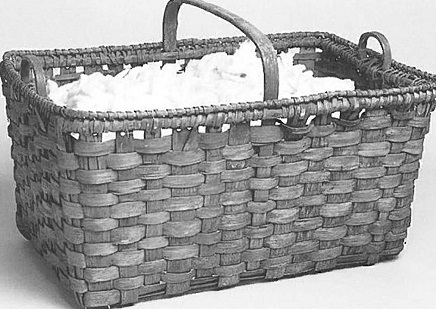
“It did not do much good to either of us,” recalled Parker, “for on the following Sunday I went into the woods again and got another pig which I dressed in the night.” He realized that there were many poor whites quite willing to take advantage of a neighboring planter’s hogs so long as a slave took the risk for them.
“As I did not have every advantage of a first-class slaughter house I was obliged to manage as best I could,” Parker wrote. “Accordingly I built a fire and gave the pig a good singeing and while he was warm from the effects of the fire. I put him into water, and then scraped him with a case-knife and finally got him clean.
“When he was properly dressed,” he continued, “I carried him on my shoulder about three miles, and turned him over to a ‘poor white’ who took him to a neighboring town the next day, and sold him for me. I got back to quarters before the hands were called in the morning so that no one knew where I had been.
“In due time the ‘poor white’ gave me my share of the money he got for the pig. With this money I bought some cloth, which a white woman made into a coat and a pair of pants for me.”
Many planters allowed slaves to keep vegetable and herb gardens around their cabins, so long as they tended them only in their spare time. Other slaves clandestinely trapped, fished, and gardened in the wild, keeping the fruits of their labor for their own tables or, like Parker with his hog, trading them with poor whites nearby. A desire for more varied, healthier diets led slaves whenever possible into their own gardens, into the forest, and on to the rivers and sounds.
Parker shows how slaves relied on the “book of Nature” beyond simple knowledge of the land to a more personal relationship with, and even communication with, the natural world. For instance, slaves used the subtle variations in owls’ calls to take heed of the approach of their masters, which enabled them to hide successfully or to labor clandestinely for their own gain.
“The slaves not only believed that the owl was their friend, and that his language was intended entirely for them, but also believed that his language was not under stood by the white folks,” he recalled.
According to Parker, Albemarle slaves found meaning in all sorts of natural signs. “A cloud over the moon, a rainy night, the barking of a dog, or any other circumstance [that] seemed to aid them in carrying out their plans, they thought that it was intended especially for their benefit,” he wrote.
This sense that nature was on their side might arise in any oppressed people living off the land. But I wonder if, to some degree, this conviction originated in a theological outlook prevalent among the Ba-Kongo, Igbo, Asante, and many other West African peoples imported to the Americas. Their religious backgrounds were very different, but most did share a world view in which ancestors played an active role in the affairs of the living. Many believed that the ancestors sometimes expressed themselves through wild animals and natural events. Most also believed in lesser deities, or spirits, that were keepers of rivers, forests, and other wild places, which further imparted a sacred character to nature.
I do not know how deeply the attitudes of Albemarle slaves toward nature embodied African spiritual beliefs. Certainly, I have observed an intimate communion with coastal lands among the most knowledgeable of the old-timers — black, white, and red — with whom I have had the privilege of exploring swamps and forests.
Nevertheless, when I read through Allen Parker’s Recollections, I am drawn again and again to the almost sacred attitude that Albemarle slaves displayed toward the natural world. And at such times, I wonder if in those pages we might have far more to learn than I ever expected — and not just about the past.
This article was published in the High Season 2000 issue of Coastwatch.
For contact information and reprint requests, visit ncseagrant.ncsu.edu/coastwatch/contact/.
- Categories:

